CONCEPT
Climate change communication often struggles due to its distant and abstract nature, making it challenging for people to connect with the issue on a personal level.
Schaufenster der Zukunft is an interactive installation that follows a playful approach to raise awareness for the issues of climate change. By letting the users/players explore the implications of climate change on a local scale, it tries to make this complex topic more personal and relatable.
Using only motion-tracking as the user input and AR, the players can shape and see their envisioned future by deciding between familiar climate-related elements. The project aims to encourage users to engage in critical self-reflection, contemplating their habits and behaviours, and to evoke discussions and facilitate the exchange of diverse perspectives among users.
How to play
1. Learn & Explore
Players begin with a vertical scrollable interface showcasing various climate-related items—such as cars, wind turbines, and avocados—that will appear later in the game. Each object comes with a brief list of pros and cons, highlighting its environmental impact as well as its practical benefits. Players can swipe through the objects to explore their significance and prepare for the gameplay phase.
2. Let's play
Now the action starts! The previously introduced objects begin to fall randomly from the top of the screen. Players must make quick decisions: by swiping rapidly (similar to Fruit Ninja), they can "cut away" the items they don't want in their vision of the future. Items left untouched fall to the bottom and are integrated into the player’s version of the future. Every decision shapes a unique outcome, based entirely on the player's choices.
3. Your future
After one minute, the game ends and the player is shown the future they’ve built. The final screen visually represents the impact of their decisions: objects that were allowed to pass appear larger, smaller, or may not appear at all—depending on how many were let through. This personalised future reflects the values and priorities demonstrated during gameplay.
Simple elements from our daily life were chosen to address topics such as mobility, energy production and food production.
Public Installation and Play Testing in Seestadt, Vienna.
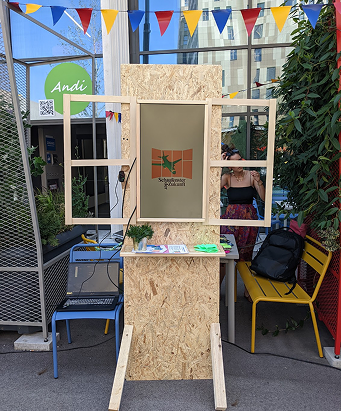
Start screen
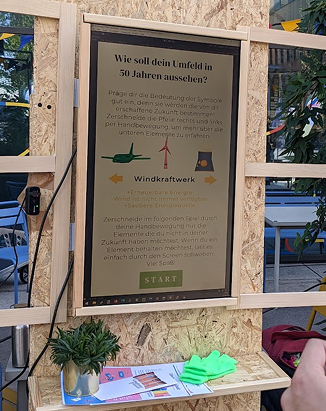
Info screen
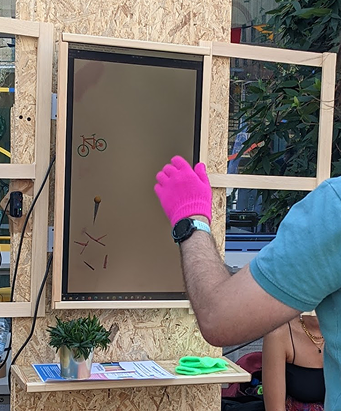
Game screen

Result screen
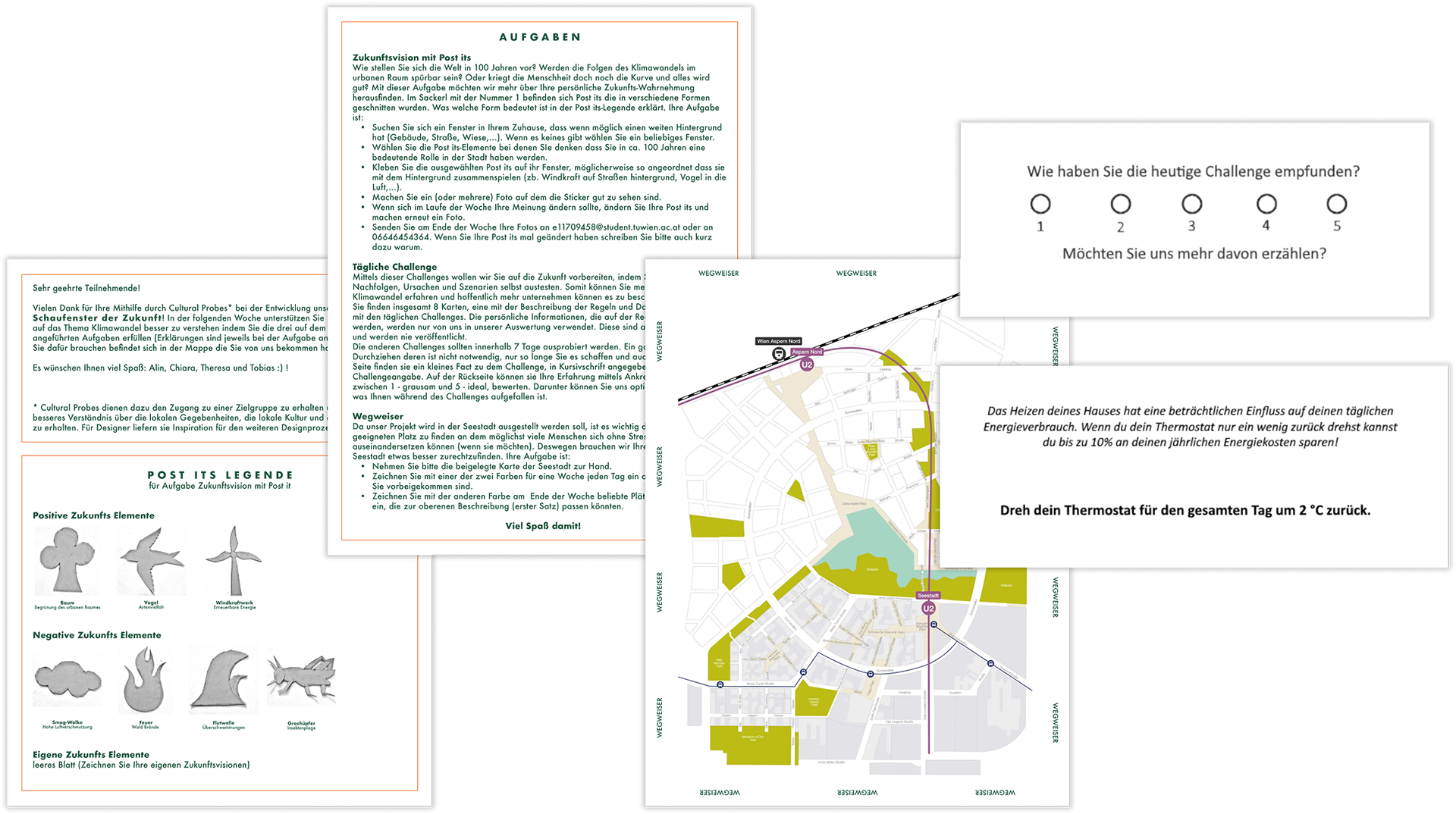
Cultural Probes Manual
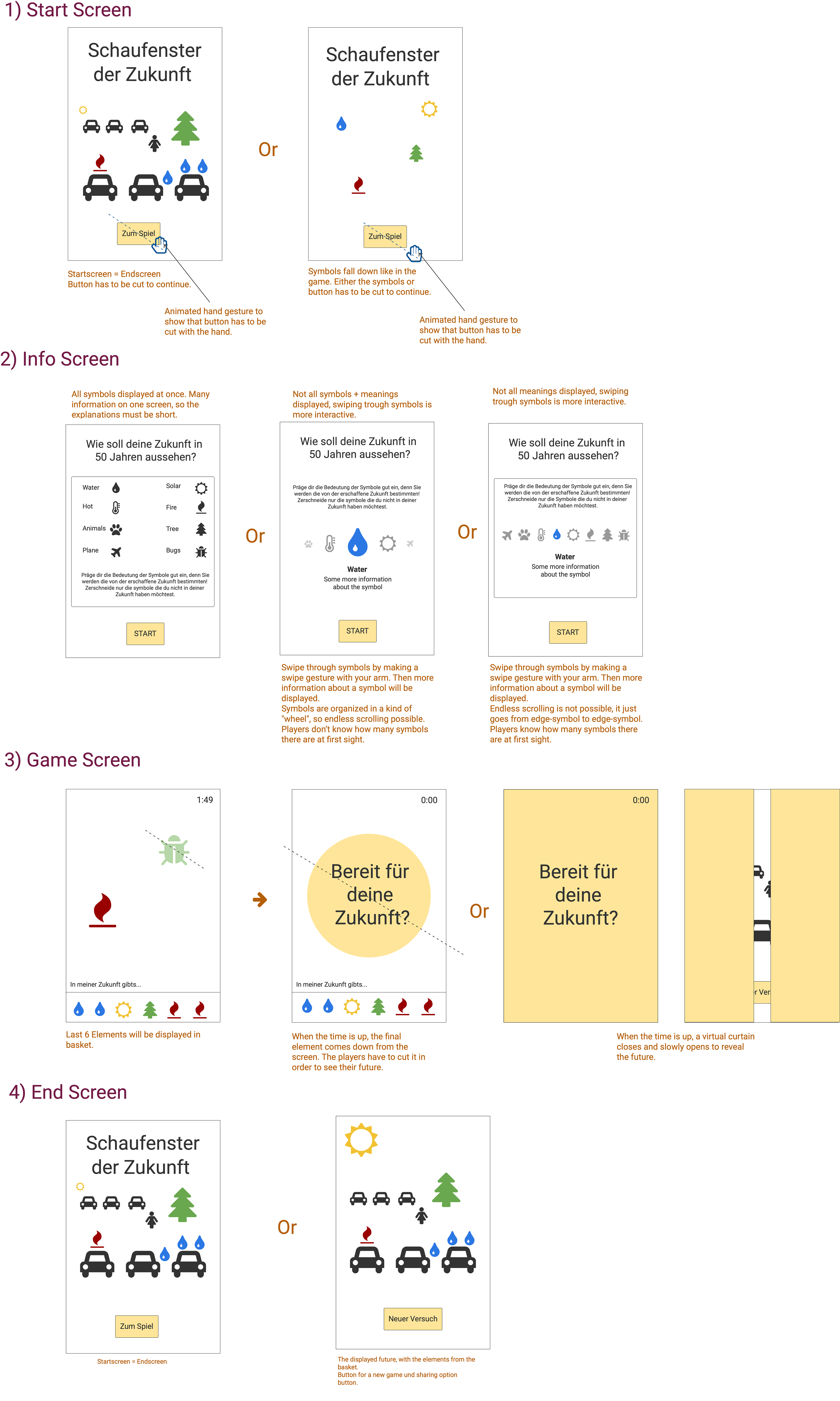

Game manual (German)

Provocative Requisit Experiment
Making of
Schaufenster der Zukunft was a year-long project developed as part of a Design Thinking course. It was a collaborative effort by Alin Munteanu-Calen, Theresa Reiterer, Tobias Ungerböck and me.
During the first semester, our focus was on concept development for a project addressing climate change. We employed a variety of user research methods to gain insights and inspiration from our target audience. These included expert interviews, cultural probes, provocative requisites, design workshops, and a custom design game. Many of these activities were conducted with residents of Seestadt Aspern, the specific location for which this project was designed.
Once the conception phase was finished, we transitioned into the production and development phase. This involved creating initial wireframes and screen designs, programming augmented reality and motion tracking capabilities, and 3D modelling the in-game objects. A key part of this phase was frequent user testing to refine the experience. My main responsibilities included designing and modeling the 3D objects, creating screen designs, and leading the user testing process.